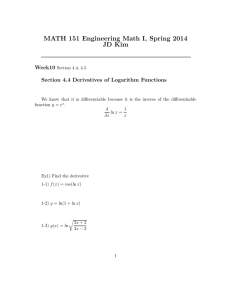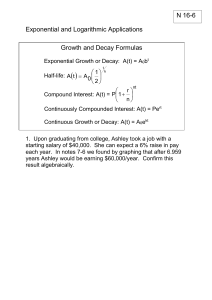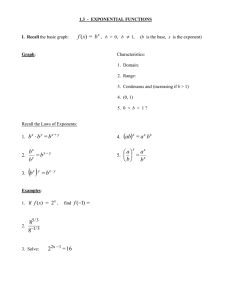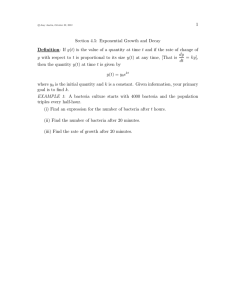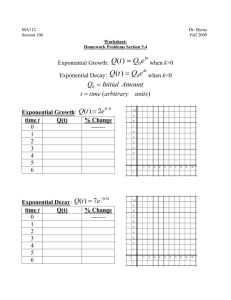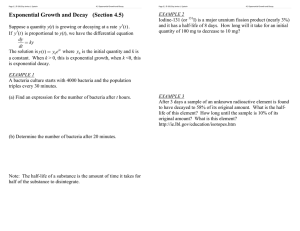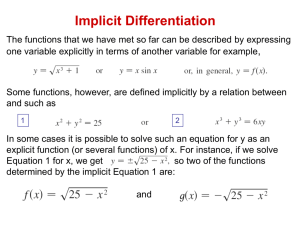Section 4.5: Exponential Growth and Decay
advertisement
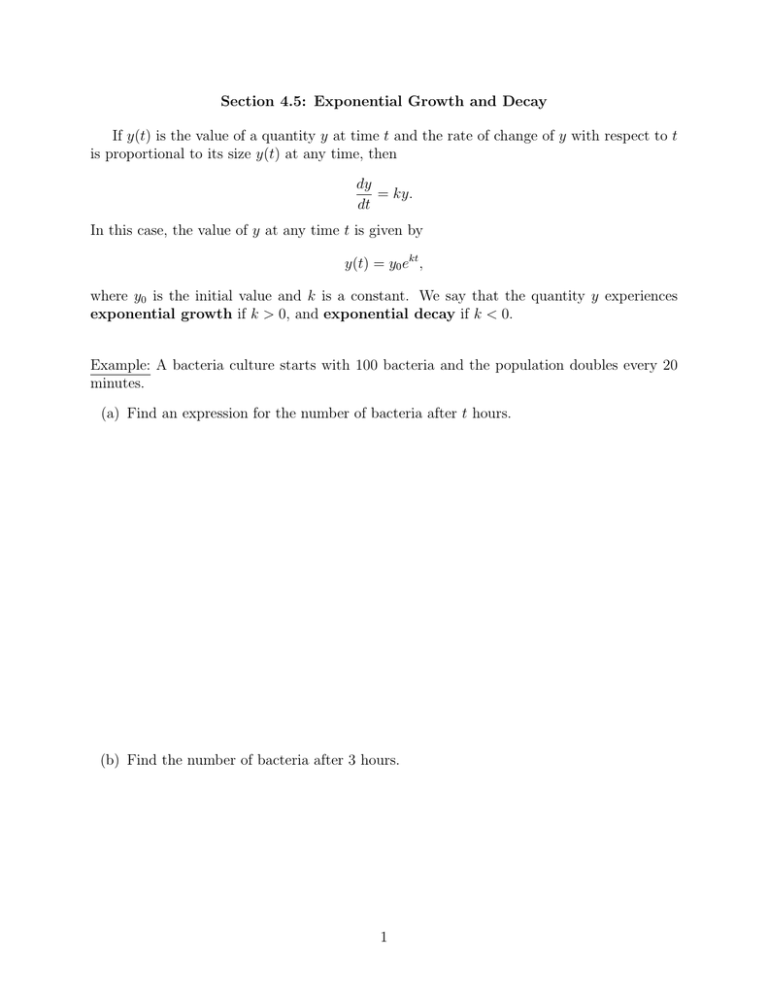
Section 4.5: Exponential Growth and Decay If y(t) is the value of a quantity y at time t and the rate of change of y with respect to t is proportional to its size y(t) at any time, then dy = ky. dt In this case, the value of y at any time t is given by y(t) = y0 ekt , where y0 is the initial value and k is a constant. We say that the quantity y experiences exponential growth if k > 0, and exponential decay if k < 0. Example: A bacteria culture starts with 100 bacteria and the population doubles every 20 minutes. (a) Find an expression for the number of bacteria after t hours. (b) Find the number of bacteria after 3 hours. 1 (c) When will the population reach 10, 000? Example: A bacteria culture starts with 500 bacteria and after 3 hours there are 8000 bacteria. (a) Find an expression for the number of bacteria after t hours. (b) Find the number of bacteria after 4 hours. 2 (c) In what period of time does the population double? Definition: The half-life of a substance is the time it takes for half of the substance to decay. Example: Polonium-210 has a half-life of 140 days. (a) If a sample has an initial mass of 200 mg, find a formula for the mass that remains after t days. (b) Find the mass of the sample after 60 days. 3 (c) When will the mass of the sample be reduced to 10 mg? Example: After 3 days a sample of radon-222 decayed to 58% of its original amount. (a) What is the half-life of radon-222? 4 (b) How long would it take the sample to decay to 10% of its original amount? Theorem: (Compound Interest Formula) If a principal P is invested at an interest rate r compounded n times per year, then the amount in the account after t years is given by r nt A=P 1+ . n Example: If $3000 is invested at 5% interest compounded monthly, find the amount after 5 years. Theorem: (Compounded Continuously Interest Formula) If a principal P is invested at an interest rate r compounded continuously, then the amount in the account after t years is given by A = P ert . Example: How long will it take an investment to double if the interest rate is 6% compounded continuously? 5 Theorem: (Newton’s Law of Cooling) The rate of cooling of an object is proportional to the temperature difference between the object and its surroundings. That is, if y(t) is the temperature of an object at time t, then dy = k[y(t) − T ], dt where T is the temperature of the room in which the object is cooling. In this case, y(t) = (y0 − T )ekt + T, where y0 is the initial temperature of the object. Example: A thermometer is taken from a room where the temperature is 20◦ C to the outdoors, where the temperature is 5◦ C. After one minute the thermometer reads 12◦ C. (a) What will the reading of the thermometer be after 2 minutes? (b) When will the thermometer read 6◦ C? 6
